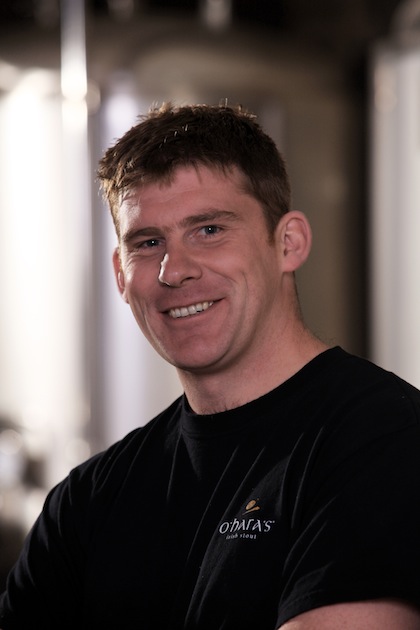Over here, we tend to think of brewing in Ireland as being dominated by one very big brewing company and two smaller ones. Tell me about the rise of craft brewing culture there.
These days, it’s really one big company and one smaller one, Diageo and Heineken. Craft brewing really took off in Ireland in the early or mid-nineties. Most of the inspiration came from the U.S. People like Seamus O’Hara [founder of Carlow’s] had traveled in America, and tried beers over there and thought, well, why can’t we do that in Ireland? There used to be a time in Ireland when every town and village had a brewery. When you go to towns like Carlow, you see names like Brewery Lane and Malt House Street, so what they were trying to do was revive the tradition of brewing that had existed in Ireland up to maybe the 1950s.

How was that tradition lost?
I think it was consolidation under the big guys, when they bought up smaller breweries and centralized production in the big cities. And there were a couple of world wars that didn’t help matters.
What’s happened since the nineties?
There have been various craft breweries that have opened, some have closed and some have done well. It’s been a slower process than many of the people who got in originally thought it would be. But Ireland became a really wealthy country in the nineties, and people started to travel a lot―not just the young people, but everybody. When people traveled, they saw the variety that was available abroad, in the U.S. and the U.K., in Germany, and the quality that was available as well.
They started to demand that when they came home. The import market became strong, and on the back of that market, the craft brew market began to rise as well.
How many craft breweries are there now in Ireland?
I think in total there are about seven or eight, with a couple others in the pipeline . We’re the biggest. There are a number of small ones opening and closing. Most are in the big cities, some in Dublin, some in Cork, the rest scattered around.
Was it a challenge for Carlow to win an audience?
More so in the beginning, before I started with the company. There had been a perception that a small brewery couldn’t be very good quality, that these guys were crazy. It took a few years to change that. Then the stout won a huge award in 2000: beer of the millennium at the International Brewing Awards. When that happened, people sat up and took notice.
A lot of drinkers in Ireland would have been pretty conservative when the brewery opened, but now lots of them are educating themselves. There are online communities where people talk about beer. Shops and pubs are stocking a wider range, so it’s an up-and-coming thing.
Carlow Brewing is one of the oldest of these new breweries, isn’t it?
Yeah, we’re almost 12 years old, and we’ve just moved to a new production facility where we’ve quadrupled our capacity. Two years ago, we celebrated ten years by bringing out our Celebration Stout in a 750 ml bottle, which did well in the States, actually. And we’ve got a spin-off from that, a new product with an Irish name, Leann Folláin, which is a 6 percent stout. It means “wholesome ale” in Irish, so we thought that might be a good name for a naturally brewed Irish stout. It’s currently available only in Europe, but we’re hoping to expand that.
How many O’Hara beers are there?
Currently we have five core brands. We do a beer for Marks and Spencer’s supermarket in the U.K. It’s another Irish stout, and it’s been very popular. We’re currently working on some new beers, taking steps to introduce cask beer to the Irish market, and we’ve created an IPA recently.
Is that one of the only IPAs in Ireland?
There are a couple of others, but I think this is the only one on cask.









